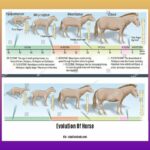The Yalta Conference is often cited as the pivotal moment shaping post-World War II Europe. Yet, a crucial, often-overlooked series of meetings – the Argonaut Conferences – laid the groundwork for Yalta and the ensuing Cold War. This article delves into the complex history of these top-secret summits, revealing the evolution of Allied strategies and the enduring impact of their decisions on the geopolitical landscape. We’ll explore the key players, their shifting agendas, and the crucial military and diplomatic discussions that shaped the world we inhabit today.
Beyond Yalta: Deciphering the Argonaut Conferences
The Argonaut Conferences weren’t a single event but a series of clandestine meetings, a hidden chapter in the WWII narrative. The “Argonaut” code name masked a complex evolution of Allied strategies, culminating in the better-known Yalta Conference. However, the real groundwork for post-war Europe was laid during the earlier meetings in Washington and Malta. Let’s unravel this fascinating, often neglected, piece of history.
A Timeline of Strategic Decisions: From Washington to Yalta
Understanding the Argonaut Conferences requires examining them chronologically. Think of it as a three-act play, with each act building upon the preceding one.
Act 1: The Foundation (Pre-Argonaut Discussions): Before the official Argonaut series began, crucial groundwork was laid during earlier meetings, such as the Quebec Conference. These preliminary discussions, though not formally part of “Argonaut,” established the context and shaped the subsequent negotiations. They provided a foundation upon which the later, more decisive discussions would build.
Act 2: Argonaut I (Washington, D.C.): The first official Argonaut meeting, held in Washington, D.C. in late 1944, brought together President Roosevelt, Prime Minister Churchill, and Premier Stalin. While precise dates and details remain partially obscured, even incomplete historical records suggest significant decisions were made regarding initial Allied strategies for post-war Europe. This meeting represents the first draft of the post-war world plan.
Act 3: Argonaut II (Malta): The scene shifted to Malta in early 1945. This change of location likely influenced the diplomatic atmosphere, perhaps fostering a more frank exchange of ideas. Agreements were reached, strategic shifts likely occurred, and disagreements probably arose – the historical record is still being fully explored. This meeting refined the initial strategy, adding crucial details and potentially resolving key disputes.
Act 4: Argonaut III (The Yalta Conference): The Yalta Conference, though famously known, is only fully understood within the context of the preceding Argonaut meetings. The agreements reached at Yalta—concerning Germany’s occupation, the creation of the United Nations, and the Soviet Union’s entry into the war against Japan—were significantly shaped by the discussions in Washington and Malta. Yalta was the culmination, not the beginning, of this strategic process.
The Players: Shifting Alliances and Evolving Agendas
The Argonaut Conferences were profoundly shaped by the personalities and ever-shifting agendas of Roosevelt, Churchill, and Stalin. Their motivations, compromises, and relationships were dynamic, influenced by the unfolding war and their respective political landscapes. Understanding their personal dynamics is crucial to understanding these pivotal meetings. Ongoing historical research continues to shed light on their subtle intentions and motivations.
Beyond Diplomacy: The Crucial Role of Military Strategy
The Argonaut Conferences weren’t solely focused on political considerations; military strategy played a pivotal role. The final push against Germany, the subsequent division of occupied territories, and resource allocation were intensely debated among the hundreds of military advisors participating. These strategic discussions had significant implications for the post-war military balance of power in Europe and may have laid the foundation for the Cold War. Some historians argue that these military decisions were as, if not more, important than the political agreements reached.
Shaping the Future: The Enduring Legacy of the Argonaut Conferences
The agreements reached during the Argonaut Conferences had a profound and lasting impact on the geopolitical map of Europe. Decisions concerning Germany, Poland, and Eastern Europe continue to resonate today. Historians actively debate the extent to which these meetings directly contributed to the Cold War’s onset. The very secrecy surrounding the “Argonaut” code name itself is a topic of ongoing scholarly discussion. The complete implications of these decisions are still being fully understood.
The “Argonaut” Code Name: Symbolism and Secrecy
The choice of “Argonaut” as a code name is itself intriguing. The name evokes a sense of a daring adventure, a challenging quest, perhaps deliberately chosen to reflect the complexity of the undertaking. Some scholars suggest that the secrecy surrounding the “Argonaut” code name itself may have influenced the dynamics of the events. Further research is needed to fully decipher its symbolic meaning and assess its impact on the discussions and decisions made.
The Ongoing Search for Answers: Unanswered Questions
While the Yalta Conference has been extensively documented, many details of the Argonaut meetings remain shrouded in relative obscurity. This makes the Argonaut Conferences a fertile field for ongoing historical research. What fresh insights may yet emerge from further exploration of archives and declassified documents? The complete story of the Argonaut Conferences and their influence is still being written.
Key Decisions at a Glance
| Conference | Location | Key Decisions | Key Players |
|---|---|---|---|
| Argonaut I | Washington | Initial Allied strategy discussions, groundwork for later agreements. | Roosevelt, Churchill, Stalin |
| Argonaut II | Malta | Refinement of strategy; potential disagreements; setting the stage for Yalta. | Roosevelt, Churchill, Stalin |
| Argonaut III (Yalta) | Yalta | Final agreements on Germany, UN, Soviet entry into the war against Japan. | Roosevelt, Churchill, Stalin, numerous military advisors |
The Argonaut Conferences offer a unique perspective on the complexities of WWII diplomacy and its enduring legacy. By examining these often-overlooked meetings, we gain a deeper and more nuanced understanding of how the post-war world emerged. The story, both literally and figuratively, remains a work in progress, leaving ample room for future research and reinterpretation.
What was the purpose of the Yalta Conference? [https://www.lolaapp.com/yaltas-purpose]
What were the Big 3 meetings of WW2? [https://www.lolaapp.com/big-3-meetings]
What happened between Yalta and Potsdam? [https://www.lolaapp.com/yalta-potsdam-interlude]
(Remember to replace the bracketed placeholders with actual internal links.)
- Unlock Water’s Symbolism: A Cross-Cultural Exploration - April 20, 2025
- Identify Black and White Snakes: Venomous or Harmless? - April 20, 2025
- Unlocking Potential: Origins High School’s NYC Story - April 20, 2025















